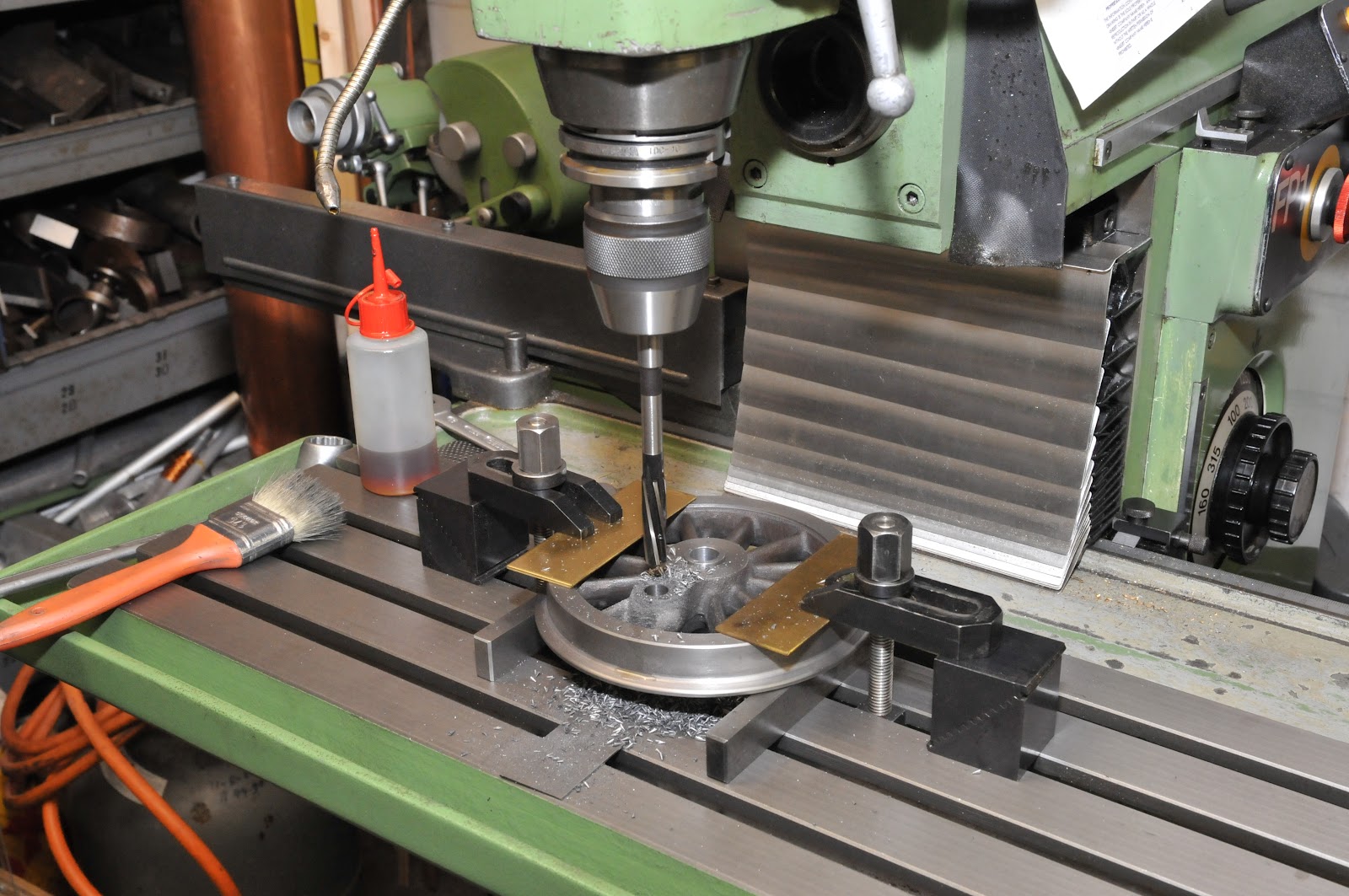The frame looked somewhat strange, with the unmachined wheel castings standing alongside. So the next job to tackle was to turn the wheels. The castings are of very good quality and they were easy to machine.
The castings from Live Steam Service; are of good quality iron.
The set of six wheels during production.
The first operation was to turn the outer rim clean. Now it could be held on this rim in the chuck and the front face and tread were 'cleaned' also. By 'cleaning' only a small amount of material is removed, just enough to get rid of the rough surface of the casting. Once this is done, the wheels have a so called reference side or face, on which they can now be held to turn the back of the wheel. In this operation, the wheels get their final width dimension. In the same setting the hole for the axle is drilled and bored to the final close fit dimension of 18mm (tol. 18.00 - 18.02mm)
Profiling the tread is done in various settings. The wheel is therefore clamped on the faceplate with the aid of a mandrel which is held in a collet. The wheel tread is 3 degrees coned. These wheels are, with a diameter of 138mm, even a few millimetres smaller than those on the GWR 0-4-2 "Didcot".
A quick setup in the milling machine was made for drilling and reaming the crankpin holes. No complex jig is needed, only a pin of (in this case) 18.01 mm, that has been screwed and fixed in the T-groove on the table. The wheel is clamped on the table and machined. Without moving the milling machine table, all wheels were treated in the same manner.













